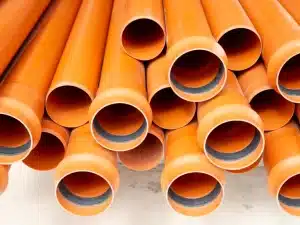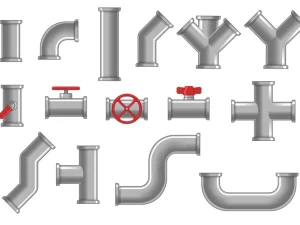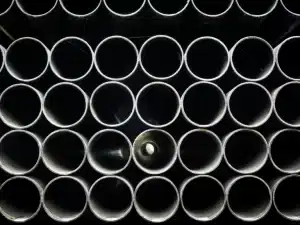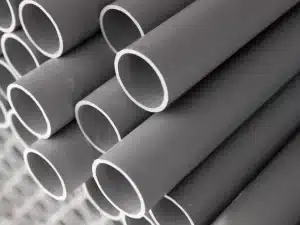Understanding the Manufacturing Process of Welded Pipes
Welded pipes are essential for construction, oil and gas, water distribution, and manufacturing. These pipes are created by rolling steel plates or strips into cylindrical shapes and welding the edges together. The welding process ensures durability and strength, making welded pipes a cost-effective solution for various applications. Unlike seamless pipes, welded pipes are more readily available in larger sizes and lengths. They also provide a reliable and efficient means of transporting fluids and gases. Pipe flange suppliers recommend welded pipes for applications that demand high performance and structural integrity while remaining affordable.
Types of Welded Pipes
There are several types of welded pipes, each suited for different industrial applications:
Electric Resistance Welded (ERW) Pipes: These pipes are manufactured using high-frequency electric resistance welding and are commonly used in water pipelines, scaffolding, and structural applications.
Longitudinal Submerged Arc Welded (LSAW) Pipes: LSAW pipes, manufactured through submerged arc welding, are ideal for high-pressure applications and structural purposes due to their superior strength and durability.
Spiral Submerged Arc Welded (SSAW) Pipes: SSAW pipes are created by continuously welding a coiled steel plate into a spiral shape. They are widely used for transporting water, oil, and gas.
High-Frequency Induction (HFI) Welded Pipes: Designed for applications requiring precise dimensional accuracy, high strength, and excellent weld integrity.
Raw Materials Used in Welded Pipe Manufacturing
The materials used greatly impact welded pipes’ quality, durability, and performance. Common materials include:
Carbon Steel: Highly preferred for its robust strength, budget-friendly nature, and reliability in demanding industrial applications.
Stainless Steel: Widely used for its strong resistance to rust, extended service life, and effectiveness in harsh and hygienic environments.
Alloy Steel: Offers superior mechanical properties, enhanced strength, and high-temperature resistance, making it ideal for demanding applications.
Aluminum and Copper Alloys: Preferred for their lightweight nature, excellent corrosion resistance, and suitability for industries requiring efficient heat conduction.
Step-by-Step Manufacturing Process
The manufacturing of welding pipes follows a systematic process to ensure consistency and strength. The key steps involved are:
Raw Material Selection: High-quality steel plates or coils are selected based on the required pipe specifications.
Slitting and Edge Preparation: The steel is cut into the required width, and the edges are prepared for welding.
Forming the Pipe Shape: Rollers gradually shape the steel strip into a cylindrical form.
Welding Process: The edges are joined using electric resistance welding (ERW), submerged arc welding (SAW), or high-frequency induction welding.
Heat Treatment: The welded area undergoes heat treatment to relieve stresses and enhance strength.
Sizing and Shaping: The pipe is passed through sizing rollers to ensure uniform diameter and thickness.
Non-Destructive Testing (NDT): Various tests, such as ultrasonic and radiographic inspections, check for defects in the weld.
Cutting and Beveling: Pipes are cut to the required lengths and beveled at their ends for easy assembly.
Surface Treatment: The pipes are coated or galvanized to enhance corrosion resistance.
Final Inspection and Packaging: Each pipe is inspected for quality assurance before being packed for delivery.
Quality Control and Testing Procedures
To ensure the reliability and durability of welded pipes, strict quality control and testing procedures are essential. Key methods include:
Hydrostatic Testing: Evaluate the pipe’s pressure-bearing capacity to prevent leaks and failures.
Ultrasonic Testing (UT): Detects internal and external defects using high-frequency sound waves for precision.
Radiographic Testing (RT): Uses X-rays to inspect weld integrity and identify hidden flaws.
Magnetic Particle Inspection (MPI): Reveals surface defects by analyzing magnetic field disruptions.
Dimensional Inspection: Ensures the pipe meets required specifications and tolerances for accuracy.
Partnering with JSS pipe flange suppliers ensures top-quality components that optimize performance, enhance safety, and meet rigorous industry standards.
Advantages of Welded Pipes Over Seamless Pipes
Welded pipes offer several benefits compared to seamless pipes:
Cost-Effective: Manufacturing welded pipes are more economical due to lower production costs.
Availability in Larger Sizes: Seamless pipes have size limitations, whereas welded pipes can be produced in large diameters and lengths.
Consistent Wall Thickness: Welded pipes maintain uniform thickness throughout, ensuring better strength distribution.
Customization Flexibility: Based on application needs, they can be manufactured with specific coatings, linings, and end finishes.
Faster Production: The automated welding process allows for quicker production timelines.
Common Applications of Welded Pipes in Different Industries
Welded pipes are widely used across industries for their strength, durability, and cost-effectiveness. Some common applications include:
Oil and Gas Industry: Ensures the safe and steady flow of crude oil, natural gas, and petroleum products over extended distances with minimal energy use.
Construction and Infrastructure: Used in building structures, bridge construction, water supply systems, and underground pipelines to ensure durability, strength, and long-term reliability in various projects.
Automotive and Aerospace: Integral to exhaust systems, fuel lines, and structural components, ensuring performance and safety.
Water Treatment and Plumbing: Vital for water distribution networks, drainage systems, and sewage pipelines, ensuring reliable flow and sanitation.
Chemical and Power Plants: Used to transport hazardous fluids, steam, and chemicals in high-pressure and high-temperature environments for safe operations.
Consulting JSS pipes and fittings suppliers in the UAE ensures the right components for high-quality materials for specific industry needs.
Conclusion
Understanding the welded pipe manufacturing process helps industries make informed decisions when selecting materials and suppliers. Each step ensures compliance with industry standards, from raw material selection to strict quality control. JSS pipes and fittings suppliers in the UAE provide essential components that enhance durability and efficiency, making welded pipes a vital part of industrial infrastructure worldwide.
FAQs
What Are the Most Common Types of Pipe Flanges?
Pipe flanges help connect pipes and fittings securely. Common types include:
Weld Neck Flanges: Provide strong, leak-proof connections.
Slip-On Flanges: Simple to install and ideal for low-pressure systems, ensuring a secure and reliable connection.
Blind Flanges: These block a pipe’s end to stop flow, maintain pressure, or enable system adjustments.
Socket Weld Flanges: Ideal for high-pressure, small-diameter pipes.
Threaded Flanges: Allow easy assembly without welding.
How Do I Choose the Right Flange Material?
Choosing the right flange material depends on several factors. Stainless steel flanges offer excellent corrosion resistance, while carbon steel flanges perform well under high pressure. For extreme conditions, alloy steel or nickel-based flanges are ideal. Consulting suppliers helps ensure compatibility with pipes and fittings.
How Do I Ensure Compatibility Between a Flange and My Piping System?
Match the pipe and flange material to prevent corrosion and maintain strength to ensure compatibility between a flange and your piping system. Choose the correct pressure rating, use suitable gaskets and bolts for a secure seal, and consult reliable pipe flange suppliers to select the best components for your industry needs.
What Are the Advantages of Stainless Steel Flanges Over Carbon Steel Flanges?
Stainless steel flanges provide distinct advantages, such as:
- Superior Corrosion Resistance: Ideal for harsh and corrosive environments.
- Extended Durability: Longer lifespan with minimal maintenance.
- Aesthetic Appeal: Polished finish for a clean, professional look.
- Wide Industrial Use: Widely used in food, pharmaceutical, and chemical industries.







